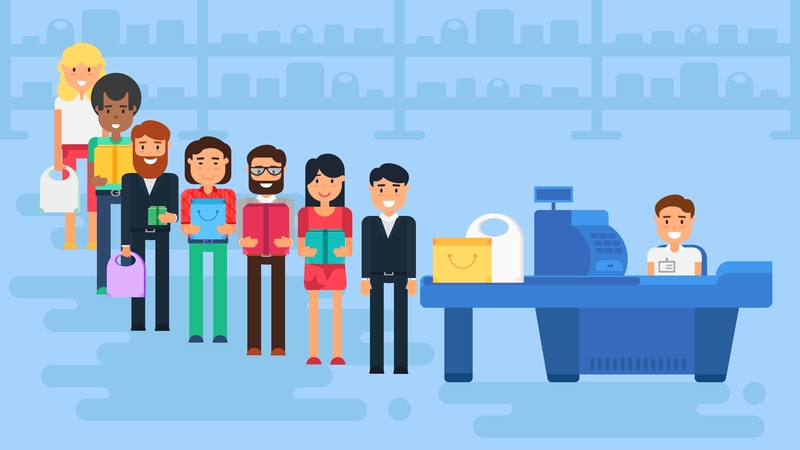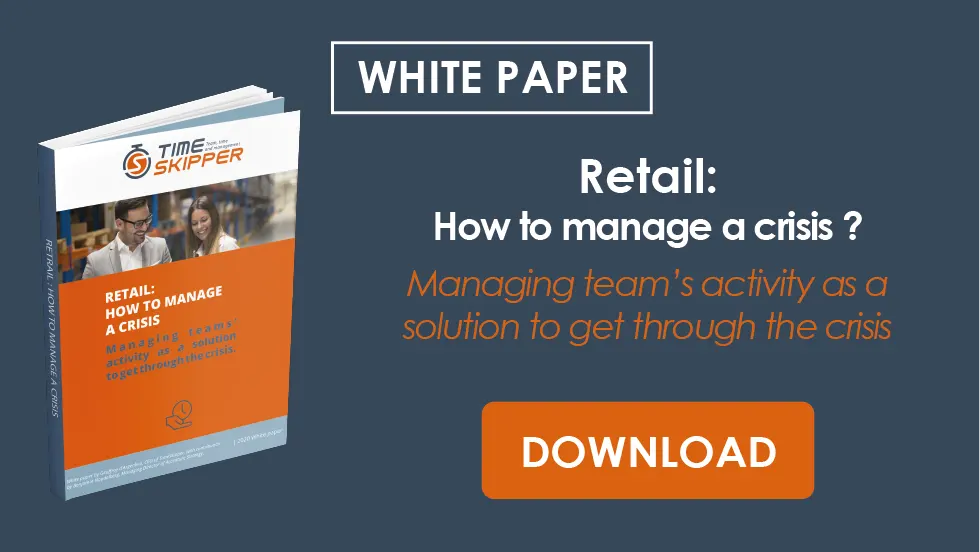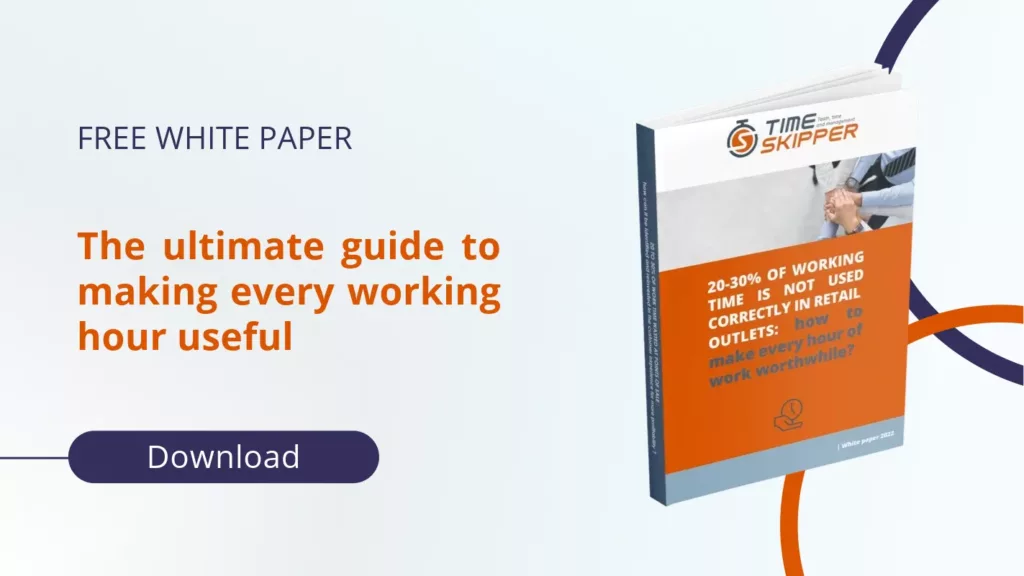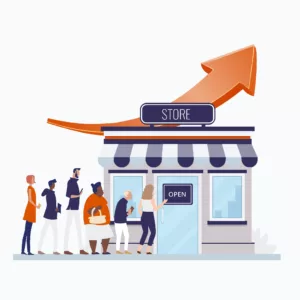The current economic instability has led to a sharp drop in volumes for all retail chains, jeopardizing the profitability of their outlets. And while the value of the average shopping basket has remained more or less unchanged for the time being due to inflation on FMCG products, one indicator needs to be closely monitored: the sales transformation rate, i.e. the percentage of customers who pass through the checkout compared to those who enter the store, over a defined period.
Depending on the distribution model – 100% advice-to-sales, hybrid or self-service – the obstacles likely to cause the transformation rate to plummet, even if they present common problems, differ significantly in the field. At what point in the buying process does the customer reach a dead end? What criteria influence the purchasing act? And what levers can be used to ensure that every customer who enters a sales outlet leaves with the product that meets his or her expectations and needs?
In the final analysis, isn ‘t it simply a matter of preventing non-transformation by acting on the obstacles to transformation?
At a time when the usefulness – and therefore the profitability – of the working hour has become a major issue in retailing, a few good questions need to be asked: what is the marginal cost of the presence of a person or of an extra working hour, compared with what it brings in?
Similarly, do we know what we lose in terms of image, sales and market share if we cut back too much on sales advice or on the tasks involved in keeping the shelves tidy in self-service models?
An update from Timeskipper
TO REMEMBER
In today’s difficult economic climate, improving in-store sales conversion rates is a daily challenge.
The stakes: converting visitors into customers and increasing the volume of the average basket.
There are two ways to maximize these two levers
- The right allocation of hours where business requires them, by anticipating sales volumes, in order to receive customers in a qualitative way
- Maintaining impeccable store appearance.
Three distinct distribution models determine the transformation rate
- The model requiring sales support throughout the entire purchasing process: sales staff must have up-to-date product expertise and the art of “knowing how to be and sell”, to deliver an advisory experience that exceeds expectations.
- The hybrid model, which requires on-demand advice: expertise is essential, but it must be complemented by the ability to meet the customer, and to give sales advice its full flavour.
- The self-service model, where action is taken on the causes of non-transformation: maintaining store attractiveness, combating irritants and proposing an innovative, seamless shopping experience using new technologies.
The Timeskipper platform addresses the issues associated with these three models, enabling a significant and rapid improvement in the point-of-sale transformation rate
1. Model based on sales advice: support throughout the sales process
In this type of model, which tends to correspond to the distribution of high-end or even luxury, artistic or highly technical products, the sales assistant is at the heart of the customer relationship. They cannot afford not to be present when the customer visits the store. In fact, their role is to take care of the customer from the moment they arrive, through a highly personalized welcome.
In this respect, customer recognition is imperative.
This involves using the customer’s first and last names, and fully understanding the customer’s interests, preferences and specific needs. It’s this customer recognition that almost always ensures a successful encounter. In this respect, the sector’s sales outlets generally have sufficient resources, but they are not always well occupied, and the usefulness of their presence is not always justified.
It is therefore important to size and, if necessary, resize teams according to the added value of their tasks. Indeed, any risk of loss of motivation due to under-activity must be eliminated. It’s the quality of support that‘s at stake, and in this sector, the impact on the sales conversion rate is indisputable.
The sales assistant: the main driver of the sales conversion rate
From the moment they are welcomed into the store to the moment they walk out the door, sales advisors are the catalysts of the conversion rate. A keen interest in the business and in-depth product knowledge are the basics. But this is not enough. In today’s ever-changing markets, the salesperson needs to be able to adapt constantly to his or her customers, and to have expertise that is always “up to date”. And for a model based on total customer support, this is all the more true.
Consider this rather “extreme” but highly revealing example of changing behaviors, which we’ll have to integrate over time … generation Z obliges! In London, as part of a pop-up store dedicated to the creations of the Paco Rabanne brand and the works of Victor Vasarely, the upmarket luxury department store Selfridges is offering the sale of NFTs (Non Fungible Tokens).
The phenomenon is recent, but other major brands such as Dolce & Gabana, Gucci, Prada, Hermès, Vuitton and Balenciaga had already positioned themselves on this market in 2021 with ultra-limited collections… and record sales. It has to be said that for target customers, acquiring NFTs from luxury labels is the ultimate mark of belonging to a highly exclusive and selective community, as a collector, art lover or metaverse player.
In fact, according to a Morgan Stanley study, NFTs for luxury brands will account for 10% of the luxury goods market by 2030, or 50 billion euros. This is no mean feat.
It goes without saying, therefore, that the successful sale of digital assets, ranging in value from £2,000 to £100,000, calls for specialized support.
Phygital advice, knowledge of new technologies, adoption of the codes of the new generations and reassurance as to the unique and exceptional nature of the sale: these are the skills that will be required of tomorrow’s salesperson, so as to guarantee proximity with increasingly connected users, who no longer hesitate to mix the virtual and physical worlds.
But what really makes the difference is the person: his or her interpersonal skills, authenticity, ability to decipher emotions and discern the customer’s reasons for buying, to create empathy, surprise and the unexpected! If customers enter this type of boutique – BMW, Chanel, Guerlain, Church … – it’s because they have no doubts about the use, image or quality of the products they’ll find there.
What they want is to be helped in their choice, to be listened to, sometimes to share their passion, to feel unique and THE privileged of all the privileged. They’ll probably also want advice on a particular color, size or model, and perhaps a little more expertise on the technical characteristics of the product or brand, through an anecdote told during a fitting…
The customer therefore needs to be accompanied in his purchase, while building a real human relationship, far from a purely transactional one.
Because it’s important to remember that what the customer remembers when they leave the store is their experience, and the purchase is only the end of it. In this case, the transformation depends on the art and manner in which it was carried out, on the customer’s delight during the purchasing process…
This is why, in a distribution model based on pure advice, the sales transformation rate depends entirely on your sales staff.
And since customers like to deal with the same person, if you want to win their loyalty, you also need to win the loyalty of the salesperson… but that’s another story!
2. Hybrid model: advice, yes, but when it’s needed
This model corresponds to sales outlets such as Boulanger or DIY stores. The sales staff must be present in sufficient numbers to guarantee a meeting with the customer and to humanize the relationship, but they must also be highly competent on the products and experts in one or more universes. However, advice must be tailored to the customer’s needs, which of course does not exempt them from receiving and recognizing the customer, and being ready to provide unlimited support.
Rethinking the fundamentals of the purchasing process to improve the sales conversion rate
The key to increasing conversion rates lies in the quality of advice:
- always provide better advice to customers who enter the store, so that they leave with the product they came for
- reassure them and avoid disappointment
- sell complementary products.
The sales conversion rate of the hybrid model, like that of specialist retailers, is at a low ebb. While self-service plays a major role in this type of store, sales advice is particularly important at the right moment. Most of the time, the lack of transformation stems from a lack of correlation between the expectations and needs of customers, whose consumption habits have evolved as their web experience has shaped them, and the art of converting the visit into an act of purchase. In this case, it’s a matter of rethinking the fundamentals of the buying journey: store concept, reassurance, digitalization, advice… a look at the main levers:
1. Break up your layout : give products greater visibility, for example by shortening aisles, creating alcoves by universe or type of use, dedicating areas to in situ testing – an unbeatable way of selling an upmarket product – or to services, depending on the area of activity… A fluid customer path, a livelier sales area and the opportunity to try things out are all gas pedals of transformation in GSS.
2. Increase your customers’ confidence in your products and your brand, by multiplying points of reassurance. This practice is one of the 10 commandments linked to the conversion rate on the web, and consumers expect the same proposition at the point of sale: display customer reviews and recommendations on the display surface, or those of the best-rated item in its category, or authorize – and thoroughly market – the possibility of returning an unsatisfactory item. Décathlon, for example, has greatly improved its sales transformation rate by offering a free home test and 90-day return policy in the event of dissatisfaction. Result: the brakes on purchase are lifted at the moment of decision, and 90% of products are kept! That’s pretty good, isn’t it?
3. Rely on digital tools: customers are ultra-connected, especially with their smartphones. So it goes without saying that transformation also requires digitalization of your point of sale, accompanied by a sound cross-channel strategy. Information, test/trial, decision support, ordering, payment – there are many ways in which digital tools can have a positive impact on the transformation rate… as long as they remain useful to the consumer and offer real added value. For example, touch-sensitive kiosks and mirrors connected to RFID chips can be used to display information and thus aid decision-making, while the former can be used for ordering and payment, and the latter to speed up checkout.
Mobile payment systems are also very popular with customers, as they enable them to manage their purchases right through to payment, without having to go to the checkout – the ultimate in convenience! And precisely to facilitate the checkout when it can’t be avoided, virtual queues are offered via applications such as JeFile or the creation of an avatar who queues in the customer’s place, as at Nespresso! By rewarding the effort of going to the store with a modern, pleasant and efficient retail proposition, the experience is unique, reassuring and successful. Customers get into the habit of buying and ordering in the same place: the loyalty rate increases, and so does the conversion rate. Amazon has made this one of its spearheads!
4. Rely on your sales staff: at one time or another, and for whatever reason, the customer may need advice. All the more so as many products require the intervention of a salesperson. Even the most “top-of-the-range” locations, the most reassuring reinsurances, the most connected digital tools will not help: the sales assistant remains one of the pillars of sales in the hybrid model, and his or her role in the transformation process is without equal. It’s up to the salesperson to identify where the customer is in the buying process, so as to best accompany them through the next stages, while generating added value. This can be informative, personal, fun, social, or all of the above … the important thing is to remove the disincentives to purchase, and to create a positive customer experience.
5. … and connect them in a relevant way: today, salespeople can count on a real sales aid: the tablet! Mobile and more available, they can easily access customer histories, check stock levels in just a few clicks, suggest orders, similar or complementary products, delivery options, and even cash out in some cases. Séphora, for example, has enabled its sales staff to use their tablets to improve their knowledge of their customers through their on- and off-line history, connected directly to the MySephora application… This application is said to have helped double the chain’s sales!
3. Self-service model: preventing “non-transformation
The self-service model is inherent to food retailing. As a result, sales advice is usually limited to traditional stands. Improving the sales conversion rate depends on maintaining the attractiveness of the point of sale, providing a good experience, and removing all obstacles to natural purchasing. How can we do this? By offering the right product, in the right place, in the right quantity, at the right time, at the right price, with the right information.
Maintain store appeal to improve sales conversion rates
A store that makes people want to buy requires a number of upstream actions adapted to customers’ needs and consumption patterns, which can change very quickly as a result of current events and the environment.
Updating the merchandising concept, taking into account the catchment area, is a fundamental part of the store’s “seduction capital”.
Regularly revising the offer in relation to the environment enables constant adjustment to current trends. This can be achieved by optimizing SKUs to make them easier to read (Carrefour’s current strategy) and/or by highlighting the least expensive SKUs, as is currently the case in response to inflation on FMCG products.
Product presentation and the implementation of responses to various commercial challenges that facilitate the act of purchasing (such as sales events) are also important levers for increasing the sales conversion rate.
Eliminate irritants in the purchasing process and the causes of non-conversion
Finding the product you want without having to look for it, feeling comfortable in the store, having confidence in the items you buy, and not having to wait at the checkout: these are the keys to conversion! Basic perhaps, but it turns out that these fundamentals are not always present in a self-service distribution model, of which the supermarket is the most representative format. Breakage, for example, represents the archetype of non-transformation: in 31% of cases, the customer changes store, in 15% he postpones his purchase and in 9% he buys nothing. In other words, the sale is completely lost for more than half of all breakages! In other words, the entire sale is lost in more than half of these cases. Other reasons that can have a serious impact on the conversion rate include poor store cleanliness, or poorly signposted aisles. In short, the general appearance of the department has an impact on the non-transformation rate!
Similarly, the length of the checkout queue and the time wasted in it lead 30% of consumers to abandon their shopping baskets, according to an IFOP study. A queue at the checkout can even discourage customers from entering the store. In each case, the result is the same: there is no conversion, even though the intention to buy was there in the first place. Virtual or one-stop queuing, self-service checkouts, mobile payment and checkout – like the Lyf Pay and Monop’easy applications – are all ways of making checkout more fluid.
Ultimately, increasing the sales conversion rate in a self-service model means preventing the “treatment” of the main irritants and disincentives to purchase: stocking shelves, keeping the store clean, reducing waiting times at the checkout, and ensuring that services resulting from the digitalization of the point of sale, such as the drive-through or home delivery, are provided correctly. By streamlining the purchasing process, the customer experience improves and helps increase conversion rates.
Here’s a tidbit that hurts: over the last four weeks of 2022, the breakage rate was 5. 5%for all FMCG products. This represents an increase of 1.4 compared to the same period in 2021, and a shortfall of 4.8 billion euros for 2022. … so there’s still plenty of room for improvement in the sales conversion rate!
Use innovative, technological customer paths to improve the customer experience
Technology enables us to anticipate and promote sales, within a seamless experience. We’ve chosen to illustrate this point with the example of Amazon’s autonomous Whole Foods in Los Angeles. While this is a highly innovative project, it is also representative of what new technologies can achieve in terms of streamlining the customer experience.
A few months ago, Amazon opened its second autonomous Whole Foods supermarket in Los Angeles. The concept is to do your shopping (FMCG, fresh produce and traditional products) on 1,000m2, without a smartphone and without a cash register! Prior identification – via the palm of the hand – will link the customer to their Amazon account and associated credit card, to enter and exit the store.
The purchasing process is handled by 500 cameras, which track the customer’s movements and are connected to the virtual shopping cart. These are supplemented by additional technologies also connected to the virtual shopping cart:
- scales detecting products taken from the shelves,
- readers connectingthe price information of variable-weight goods from traditional stands such as the butcher’s (run by a natural person!) to the virtual basket
- intelligent fruit and vegetable compartments to differentiate items and prices according to location
What counts is what’s been picked up and/or put down, not necessarily what’s in the trolley. It’s even possible for several people to shop on the same account! The processing is faultless.
A nice little detail: products from the ready-cooked meals bar are sold by the size of the box, and are therefore identified by visual recognition for the application of the corresponding price.
To complete the shopping session, simply scan the palm of your hand and that’s it. The least we can say is that the self-service customer experience is amazing… and we’re waiting for a return that’s probably just as incredible in terms of the sales transformation rate!
Whatever the distribution model, but particularly in self-service and hypermarkets and supermarkets, actions taken to improve the transformation rate have repercussions on the organization of team activities. Indeed, changes linked to digitalization, to the reorganization of the sales area structure, to new tools and services, require time to be absorbed, given that the usual tasks have to be carried out in parallel.
How, then, can we allocate the right number of people at the right time to stocking shelves to avoid stock-outs, to general store maintenance (point-of-sale displays, cleanliness, dates, etc.), to preparing orders for the drive-thru or home delivery, if necessary by developing multi-skilling or multi-assignment? Similarly, how can we allocate the right people to sales advice, in the right departments, at the right time, to turn visits into sales? Or how can we assign the right person to manage automatic checkouts, direct them to dedicated queues, or check receipts for mobile payment systems?
These questions highlight the importance – and the difficulty – of organizing your business to anticipate peak traffic and product flows as closely as possible to reality, to be able to react to unforeseen events in real time, and to have the right people in the right place at the right time. The conversion rate depends on it, which is why it’s so tricky to improve!
Timeskipper is the only activity management platform that meets the challenges linked to the organization of work teams in the retail sector, in particular by identifying and capturing poorly-utilized time. By modeling the organization of the activity and integrating the time drivers likely to change it, the tool makes it possible to improve the way working hours are used, and recover free time to reallocate it to tasks aimed at improving the transformation rate!







